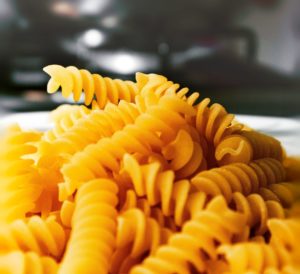You’ve been killing it at the gym and you’re seeing some results, but something just isn’t clicking. You’ve looked at sleep habits and stress management and increased your water intake, but there’s just one last hump you CAN’T seem to get over.
The dreaded grocery store!
Like anything we fear, the best way to overcome it is to take it head on and make it our friend. Believe me, it wants to be, but forces greater than us or the grocery are trying to keep us apart! Read on through and let’s address my favorite Healthy Grocery Shopping Tips!
Without getting too deep into the nutritional breakdown of how terrible most food products are now thanks to vegetable and seed oils, over processing, and essentially all boxed or bagged foods being a few science experiments away from being either plastic or dog food, there are a few simple tips you can follow to get your nutrition in check and moving in the right direction of all your other healthy habits as well!
We’ve probably all hear the adage, “Don’t go to the grocery store hungry.” Because if you do, chances are that you’ll purchase with your eyes and taste buds rather than your brain and body in mind (guilty!). Being hungry in a store designed specifically to sell you any food imaginable is a recipe for impulse purchase disaster. One of my favorite things to do that has helped me a TON in curbing impulse/poor food choices has been to simply MAKE A LIST.
There are a bunch of apps, but all you need really is your notes app or a pen/paper and about 2 minutes.
A couple of common misconceptions about eating clean/healthy are that either A) you must eat something extravagant and time consuming to make or B) all you can eat is chicken, broccoli, and brown rice. Well, if you go with option B), your grocery list is going to be SUPER easy and if you go with A, you probably won’t be sticking to the list very long when you have to figure out all the ingredients you’ll need for that breakfast sandwich with poached egg whites, 1/3 avocado, cilantro lime hollandaise, blah, blah, blah that you’ll make once and end up throwing out the rest of the ingredients.
All you need are a few staple items that fall under your protein, carbs, and fats that are your “Go-To” items. They will be the focus of most of your meals with rotations of combinations to keep it varied, but simple. The main idea of going in with a list is to help keep you on track and help avoid the lure of all the things you don’t need, but will inevitably want as you stroll through the aisles.
Not only that, but knowing what you want, you can choose to put items on your list that are typically found along the perimeter of the store, rather than down the dreaded aisles of no return! As mentioned a little earlier, the food products you’ll find in the aisles are heavily filled with processed foods, sugars, fats, and a bunch of other things that your body really doesn’t want, though your taste buds try to say differently. It’s noted that modern grocery stores contain over 40,000 items, all of which want your attention and most being down these aisles.
Grocery stores are mostly set with all their fresh ingredients along the outside perimeter – where all the fresh meats, fruits/veggies, milk, eggs, yogurt, etc… clean items you should focus on are located. These can also be categorized as the food items with limited to no ingredient list. A rule of thumb to help with your food list and grocery picking is that you want to aim for foods with the least amount of ingredients listed as possible. The more ingredients you see on a food label – looking at potato chips and cookies – the more processed and less healthy they will be for you.
If you’ve already mastered shopping the perimeter and thinking, “yeah sure that’s fine for fruits/veggies, but meat (protein) is so dang expensive!” then you’re in luck. Often times if you check the grocery stores website or app, they will showcase deals going on for all sorts of products, including protein and meats, to help you plan your weekly meals and shopping list.
Not only that, but it can help you focus on what types of protein you should buy in bulk! Now, I’m not talking about buying 3 fridges worth of meat because that would be outrageous, but I can’t tell you how great it is to search the Kroger app and see that Beef Tenderloin Roasts are Buy 1 Get 1 Free. They are still pricey – usually around $20-30 per roast, but if you can find them with the B1G1 deal, then you’ve just picked up at least a week or two’s worth of protein in one. Buying groceries at the time can feel expensive because you’re buying a lot of 1 product at once, but when you look at it from above and see that you can get multiple meals out of one product (think a pack of chicken breast that may run you $10, that’s 3-5 dinners for that $10 pack compared to swinging through McD’s where even if you hit the value menu, chances are your meal is going to be at least $5-10 PER MEAL.
Meat freezes well and a quick thaw or throw right into a crock pot can help you get multiple meals for a great deal. The price up front might seem a little high, but averaging versus eating out every meal or even just once per day, the savings is a no-brainer in the long run.
Eating healthy doesn’t have to break the bank, cause anxiety, or be overwhelmingly complex. If you feel overwhelmed, try taking 5-10 minutes before leaving the house and follow these tips to make the grocery store trip quick and painless.
Make a List
Keep to the perimeter as best you can
Check the grocery site/app ahead of time for deals
Buy protein sources (meat) in bulk
Here’s a sample of what one of my Grocery Lists might look like:
Fruit (2-3 seasonal)
Potatoes
Baby Carrots
Frozen Peas
Frozen Broccoli
Meat (check deals – beef tenderloin/rotisserie chicken?)
Yogurt
Milk
Eggs (30pk)
Noodles + Sauce
5lb bag of rice
Sweet Treat (life is about balance)
Happy shopping!

 arded compared to protein. Carbohydrates should be more focused prior to a training session as they will help provide the energy needed to get through your training session.
arded compared to protein. Carbohydrates should be more focused prior to a training session as they will help provide the energy needed to get through your training session.